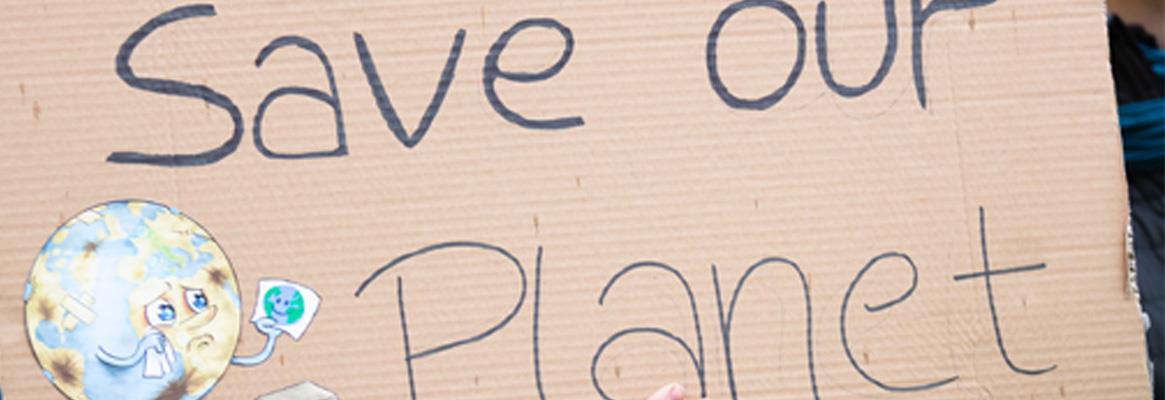The clothing industry is responsible for 8 per cent of carbon emissions. Here's what they're doing about it.
The entire world is talking about climate change. The clothing industry is no exception. There are many creative ways that clothing companies are looking to slow, or even halt, the effects of climate change. But the major shift we need isn't going to happen overnight.
Whose Responsibility Is It?
 This is one of the most pivotal questions being asked within the clothing industry right now. Is it the consumer's responsibility to purchase clothing responsibly, therefore encouraging companies with lower carbon emissions, or purchasing used clothing that doesn't contribute to emissions, hardly, at all? Or is it the textile companies' job to lead the way by reducing emissions and being mindful of what they are releasing into the environment? Or a third option, is it the clothing brands' job to only place their labels on responsibly-produced clothing, promoting a cleaner, greener future?
This is one of the most pivotal questions being asked within the clothing industry right now. Is it the consumer's responsibility to purchase clothing responsibly, therefore encouraging companies with lower carbon emissions, or purchasing used clothing that doesn't contribute to emissions, hardly, at all? Or is it the textile companies' job to lead the way by reducing emissions and being mindful of what they are releasing into the environment? Or a third option, is it the clothing brands' job to only place their labels on responsibly-produced clothing, promoting a cleaner, greener future?
There are all important questions.
The fact is, the industry itself is projected to increase carbon emissions, increasing the already-high 8 per cent contributed at the moment. That is, unless something changes.
Awareness is Growing
Fortunately, awareness of the environmental impact of clothing production and consumption is growing both on the side of consumers, and also on the end of brands and suppliers.
Fashion brands are responding to the voice of educated consumers, and are taking voluntary action to improve their standards. The most active group, both when it comes to trend-buying and trendsetting, is the younger generation. Younger consumers are often those most fired-up about climate change, but that also begs the question… is climate change awareness simply another trend that younger buyers have started to follow? And if so, how long will eco-friendly fashion stay in style?
 The Science of Fashion Waste
The Science of Fashion Waste
Less than 2 per cent of clothing is produced in the United States, so many American buyers are less aware of clothing production methods. Because of this, the bulk of this massive group of consumers can't see that clothing production starts… and sometimes ends… with oil. Oil powers much of the machinery needed to produce clothing, and it also powers the vehicles that ship it around the world.
Hundreds of energy-intensive steps are taken to produce an item of clothing, and the energy is often produced by fossil fuels. This process creates unfortunate emissions that many buyers never even see.
Because of the complex supply chain and the transportation of garments, it can be hard to figure out how, exactly, the carbon footprint can be lowered. From raw materials to production to shipping, each step is necessary… and each step is emitting waste.
But brands are still, and always will be, motivated by sales. And usually, more production equals more sales. The cycle continues.
The Recent Response
One major cause of carbon emission reduction isn't due to consumer pressure, but government pressure. The Chinese government has been pushing a crackdown on negative environmental performance, forcing lower pollution throughout a country that is responsible for a lot of textile production.
Another growing area, growing 20x faster than the brick and mortar clothing retail space, in fact, is online resale. Sites like Poshmark report thriving business, and wearing used clothing is becoming more accepted than it has in the past. This is one area where user behavior is changing, and the industry is moving over to make space.
Many professionals agree that the clothing brands are driving change, and have the most power to revolutionize the clothing industry. This is why the introduction of new materials and production methods are especially exciting. Changing the supply chain, like using recycled textiles, can have a huge impact on the environmental impact of the industry. Recently, there has been a lot of research surrounding the reuse of cotton garment waste. There are literal tons of discarded cotton clothing in landfills. New technology is able to liquefy post-consumer cotton and use it to make other cotton clothing out of the liquified state.
Preventing textiles from entering landfills is important. When piles of clothing sit in a landfill, compressed and without proper oxygenation, they create methane gas. Methane is a powerful greenhouse gas that is incredibly harmful to the environment, far more potent than carbon dioxide. Pushing used clothing into a cotton recycling program can prevent this from happening.
Through the research is being done, we are still far from having a viable, economically stable method for turning used clothing into new clothing. This an exciting area of development we'll be watching as things continue to move forward. Stay tuned for more updates on how the clothing industry is changing to create a cleaner, more sustainable future!
This article has not been edited by Fibre2Fashion staff and is re-published with permission from synzenbe.com








Comments